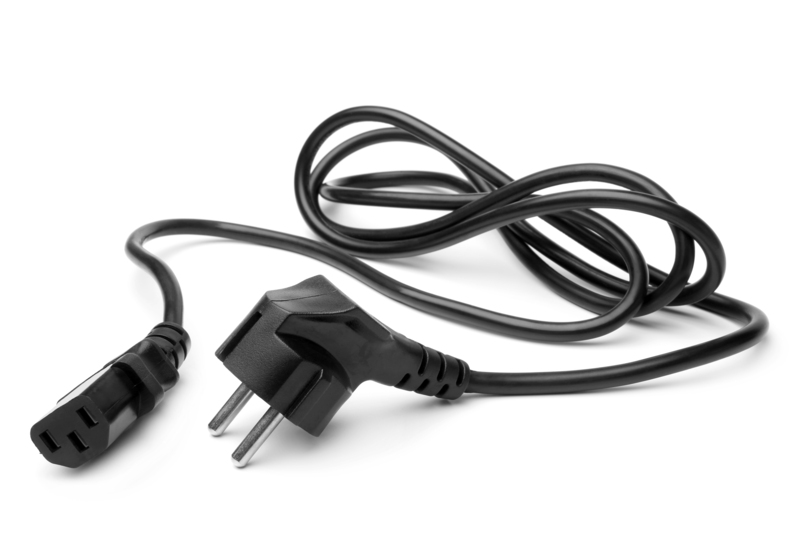Steps to Securely Store Your Freezer When Not in Use
Posted on 21/05/2025
Steps to Securely Store Your Freezer When Not in Use
Freezers are invaluable appliances in today's homes, efficiently preserving food and other perishables for extended durations. However, circumstances might arise where you need to temporarily store your freezer--such as moving, remodeling, or simply not requiring extended cold storage. Properly storing your freezer when not in use is essential to maintain its longevity, prevent costly damages, and ensure food safety in the future. In this comprehensive guide, we'll outline the crucial steps to securely store your freezer, address best practices, and offer maintenance tips for optimal performance upon reactivation.

Why Is Proper Freezer Storage Important?
When not handled properly, unused freezers can become breeding grounds for mold, harbor unwanted odors, and even suffer from internal damages. In addition, storing your freezer the wrong way can lead to:
- Mold growth and unpleasant odors due to trapped moisture and residues
- Damaged seals and gaskets from improper positioning
- Electrical malfunctions if internal components aren't adequately cared for
- Increased risk of rust and corrosion in outdoor or humid environments
- Potential loss of efficiency and increased energy consumption after reactivation
Step 1: Thoroughly Clean and Defrost the Freezer
Why Cleaning Is Vital Before Storage
Leftover food particles or moisture can quickly become a sanitation concern. Cleaning and defrosting your freezer before storage eliminates spills, stains, or debris--reducing the risk of mold and persistent odors.
How to Properly Clean Your Freezer
- Unplug the appliance: Always disconnect the freezer from its power source before cleaning to ensure safety.
- Remove all contents: Take out food, shelves, drawers, and detachable accessories.
- Defrost the unit: Allow accumulated ice to melt naturally, or use towels to absorb excess drip. Never use sharp objects to chip away ice; this may damage the appliance's interior.
- Wash interior surfaces: Use a solution of mild dish soap and warm water. For persistent smells, mix a solution of water and baking soda (two tablespoons of baking soda per quart of warm water).
- Clean removable parts: Wash shelves, drawers, and gaskets separately. Allow everything to air dry thoroughly before reassembly.
- Wipe the exterior: Don't forget the door, handles, and hinges, where dust and grime can accumulate.
Tip: Keep the appliance door open during final drying to ensure all moisture evaporates and no mildew develops.
Step 2: Ensure Complete Dryness
Moisture is the enemy of long-term freezer storage. Even minimal moisture can lead to rust, mildew, or electrical issues over time. Here's how to make sure your freezer is thoroughly dry before storing:
- Open the appliance for at least 24-48 hours after cleaning, with shelves and drawers removed.
- Use a clean, dry towel to wipe down every crevice, especially inside door seals and corners.
- Optional: Place a bowl or box of baking soda or silica gel inside to absorb any lingering moisture and odors as an added precaution.
*Never store your freezer with any wet patches. Moisture left inside can damage electronic components or lead to foul smells.*
Step 3: Secure the Doors and Gaskets
To avoid unwanted odors, mildew, or damage to the door seals, it's critical to securely prop open the freezer door during storage. Why is this step crucial?
- Closed freezer doors trap air and moisture--perfect conditions for mold and mildew.
- Open doors allow air to circulate, keeping the interior fresh and dry.
- It prevents the door seals (gaskets) from fusing shut or warping over time.
How to Safely Prop Open Your Freezer Door
- Use a folded towel, foam block, or commercial door wedge to keep the door slightly ajar (about an inch is sufficient).
- If your freezer has removable doors or lids, you may also detach and store them separately.
- Consider using child-proof latches or mower belts to prevent accidental closure, especially in locations accessible to children or pets.
Step 4: Choose the Right Storage Location
Factors for Safe Freezer Storage
Not all storage environments are created equal. For long-term success, store your freezer in an area that is:
- Dry and ventilated: Avoid places prone to high humidity or water leaks such as basements, sheds, or garages without climate control.
- Temperature controlled: Extreme heat and cold can degrade seals, gaskets, and insulation. An indoor utility room or climate-controlled storage facility is best.
- Away from sunlight: Direct UV rays may yellow plastic components and damage internal wiring.
- Flat, solid surface: Prevents warping of appliance feet or the unit becoming unbalanced over time. Avoid storing your freezer outdoors unless the manufacturer explicitly rates it for outdoor use.
Never store your freezer in areas where temperatures can drop below freezing, as residual water may freeze and expand, harming the internal components.
Step 5: Prepare the Freezer for Long-Term Storage
Wrapping and Protection
Prolonged inactivity exposes your unit to dust, dirt, and accidental bumps. To guard against these risks:
- Cover your freezer with a breathable fabric (like a cotton sheet or towel). Avoid using plastic covers, which can trap moisture and promote rust or mold.
- Cushion corners and edges with foam or bubble wrap if storing in a busy or shared storage area.
- If using a rented storage unit, raise the freezer slightly off the ground using pallets to prevent indirect water damage from floor condensation or flooding.
Step 6: Maintenance During Storage
Periodic Inspection Tips
If you plan on storing your freezer for several months or longer, regular check-ins can prevent problems:
- Inspect interior and exterior for signs of moisture, mold, or pest infestation at least once every 1-2 months.
- Ensure the door remains ajar and that air flows freely--readjust your prop if needed.
- Top up or replace baking soda or desiccant packs to maintain freshness.
- Examine the power cord and plug for any signs of rodent activity or wear.
Regular maintenance ensures your appliance remains in top condition and ready for safe reactivation.
Step 7: Preparing Your Freezer for Use Again
When the time comes to use your freezer again, follow these key steps for safe and efficient operation:
- Remove all covering materials and ensure the interior is still dry and free from odors.
- Clean the freezer again with a mild solution, especially if it has been stored for an extended period.
- Inspect power cords, seals, and components--any signs of wear, cracks, or mold should be addressed before plugging the unit in.
- Allow the appliance to stand upright and undisturbed for at least 4-6 hours (up to 24 for chest freezers) before connecting. This ensures any lubricant or refrigerant that may have shifted during storage has the opportunity to settle.
- Once plugged in, allow your freezer to reach full operating temperature before loading it with food.
Common Mistakes to Avoid When Storing a Freezer
While securing your freezer for storage is straightforward, there are common errors that can compromise the appliance:
- Storing with the door closed: Traps moisture, guaranteeing musty smells on restart.
- Leaving the unit plugged in "just in case": Leads to unnecessary energy use and possible electrical hazards.
- Storing outside in unprotected environments: Sunlight, rain, or temperature swings can ruin the appliance.
- Using airtight plastic covers: Encourages condensation and internal rusting.
- Neglecting to clean thoroughly before storage: Residual spills and food particles result in hard-to-eliminate odors.
Avoiding these mistakes is central to extending your freezer's service life.
Eco-Friendly Storage Tips
Being mindful of the environment when storing your freezer not only preserves your appliance, but also minimizes your ecological impact:
- Use eco-friendly cleaning solutions--like baking soda and vinegar--over harsh chemicals.
- Repurpose materials, such as old towels or sheets, for protective covers.
- Avoid running the freezer empty--wastes electricity and adds unnecessary CO2 emissions.
Best Storage Practices For Different Freezer Types
Chest Freezer Storage
Chest freezers are durable but often heavier and bulkier. Store upright, never on their sides or backs, and follow extended unplug time before reactivating. Keep lids open and check for interior condensation regularly.
Upright/Vertical Freezer Storage
Upright models often have more gasket surfaces. Give extra attention to sealing and propping open the doors. Remove shelves to allow total interior drying and prevent mildew in narrow corners.
Portable Freezer Storage
Portable models, such as those used for RVs or camping, are smaller but must still be cleaned, emptied, and dried. Secure cords and accessories, and store in a dust-free area.

Frequently Asked Questions About Secure Freezer Storage
Is it safe to store a freezer unplugged?
Absolutely--freezers should always be unplugged when not in use for long periods. This prevents electrical risks and reduces wear.
How long can I store my freezer without using it?
If stored correctly--cleaned, dried, aired, and protected--freezers can be left unused for many months, even years, without issue. Just ensure periodic inspections and proper site selection.
Can I store my freezer outdoors?
It's not advisable unless your model specifically advertises outdoor safe operation. Humidity, rain, and direct sunlight can quickly damage unprotected components.
Should I leave baking soda inside during storage?
Yes. An open container of baking soda helps absorb residual odors and moisture inside the storage compartment.
Conclusion: Store Your Freezer Securely For Years of Reliable Service
Whether you're managing home renovations, moving, or simply need to free up space, securely storing your freezer when not in use is critical for preserving its function and cleanliness. By following the steps above--thorough cleaning, drying, propping doors, choosing the right environment, and providing ongoing maintenance--you're investing in the appliance's longevity and the safety of your future food storage.
For additional peace of mind, always consult your manufacturer's guidelines for model-specific recommendations. With careful preparation and attention, your freezer will remain a dependable ally in your kitchen for many years to come.
Ready to store your freezer? Follow these steps and protect your investment for the future!
- Clean thoroughly and defrost before storage.
- Keep interior doors open to prevent odors and mildew.
- Choose a dry, protected location for storage.
- Inspect your freezer regularly during storage.
- Take care when restarting after a storage period.
For more freezer maintenance tips and appliance storage advice, browse our other informative guides or contact a certified technician.










